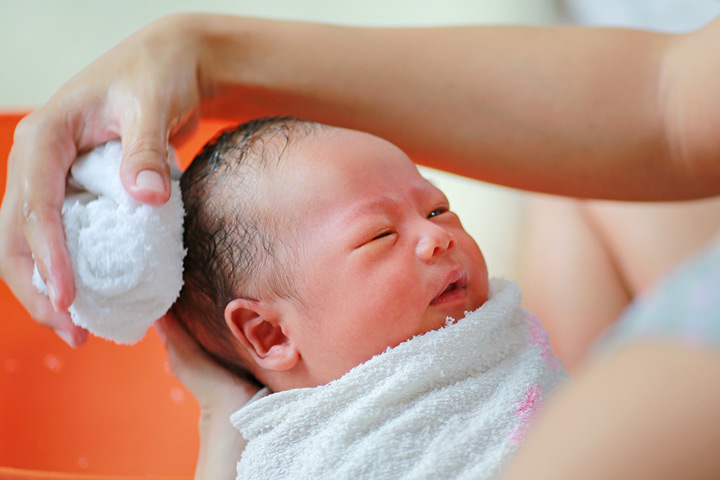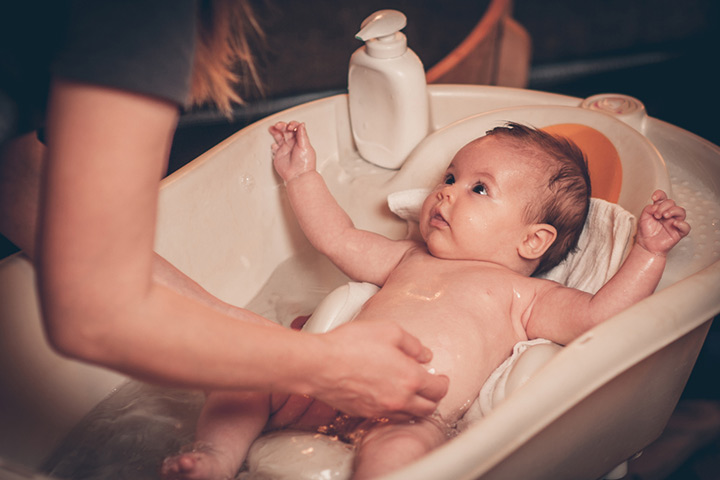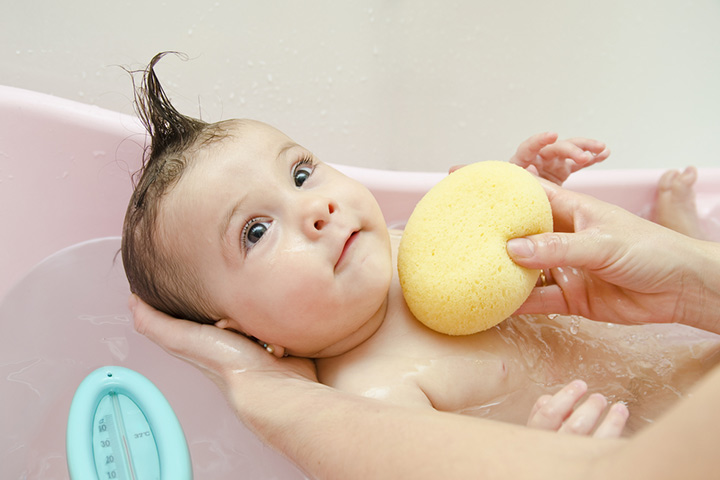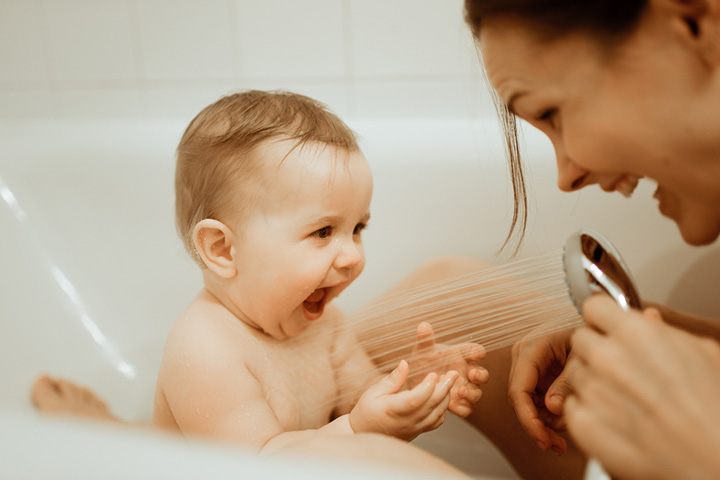
Image: Shutterstock
Bathing your baby is an intimate and great bonding experience that is treasured by parents. Parents look forward to this one on one time they get with their tiny tot. The sensation of warm water on their soft and supple skin, free of any distractions, seems like a dream. But more often than not, this parenting ritual sometimes causes anxiety in parents as they question whether they are doing it right and how to do it well. Continue reading our post as we give you a low-down on everything you need to know about bathing your baby.
Newborn’s First Bath
Image: Shutterstock
When should babies be given their first bath? The answer to this question has changed over the years. Unlike before, when babies used to be bathed within an hour or two after being born, the WHO recommends waiting 24 hours after birth before giving them a bath (1). If 24 hours is not possible due to certain cultural reasons, it is best to wait until 6 hours.
So, why should you delay your newborn’s bath?
An early bath could interrupt mother-child bonding and affect early breastfeeding success. Babies who are given baths soon after birth are also at risk of becoming cold and developing hypothermia. The stress of an early bath can result in a drop in their blood sugar levels. Babies who are given an early bath may also become prone to injury and dryness as vernix — a waxy white coating over their skin — which works as a natural moisturizer and contains antibacterial properties gets stripped off from their skin.
How Frequently Should Your Bath Your Baby?
Image: Shutterstock
Newborns don’t need a bath every day. You can bath your baby twice or thrice a week to keep them clean. If your baby enjoys a good bath time, you can bathe them once a day (2). Giving them frequent baths (more than once a day) is not recommended as this can dry out their skin.
Newborn bath time should ideally be kept no more than 5 to 10 minutes long. If your little one has dry or sensitive skin, it’s best to avoid giving them long baths.
The Best Time To Give Your Baby A Bath
Image: Shutterstock
You can bath your baby any time during the day. However, try to pick a time when both and your baby will be comfortable and relaxed and won’t be interrupted by anyone else. Avoid bathing your baby when they are hungry or soon after feeding.
If bath time is a soothing experience for your baby, you could give your baby a bath in the evening to help them sleep.
How To Give Your Baby A Sponge Bath
Image: Shutterstock
It’s ideal to give your newborn only sponge baths until the stump of the umbilical cord falls off. This usually takes about one to two weeks after birth (3). A sponge bath is easy and helps your baby stay clean until he/she is ready for a regular bath. Below we list down the steps of a sponge bath:
- Have all the bath supplies ready: This ensures that you don’t have to leave your baby in the middle of the bath to get the supplies. So, before you begin, have a basin full of water, a damp washcloth, a dry towel, and any other essentials that you might need.
- Lay the baby flat: You can lay them down on the bed, floor, counter next to the sink, or a changing table. To make sure that the newborn is comfy, lay down a blanket or fluffy towel. Make sure you support the baby at all times using a safety strap or your hand to prevent any falls or injuries.
- Start with the face: Use a damp cloth to clean the face, making sure the water doesn’t get into the eyes or mouth. Now slowly move along to the rest of the body, finishing with the diaper area.
- Keep baby warm: Keep the baby warm at all times by uncovering only a part of the body that is being washed.
Giving Your Baby A Regular Bath
Image: Shutterstock
Once the stump of the umbilical cord has fallen off and it’s completely healed, you can start giving your baby regular baths. Below we list down a few tips to make bath time easier for you and your little one (4):
- You could use a plastic baby bathtub with a textured slope surface or a sling to keep your baby from sliding. If you plan on purchasing an infant bathtub, make sure it meets the current safety standards. Parents also find it convenient to bathe their newborn in a sink or bathinette.
- It’s safe to avoid using bath seats for your baby as your infant can easily slip and injure themselves or drown.
- Never leave your child unsupervised as the risk of drowning is high with kids below the age of 1.
- Always check the water temperature before the bath to ensure that the water is warm but not hot. Touch the water with the inside of your wrist or elbow to check the temperature.
- Your baby’s skin is sensitive and can easily dry out. So make sure you use soap sparingly and keep bath time brief.
- Once you’ve undressed the baby, quickly get them in the water to keep them warm. Support the baby’s head using your hand while gently lowering the body in water. Ensure that the water level is low so that most of the baby’s body is well above the water.
Bathing your baby can be a great bonding experience. So, make sure to enjoy the special moments and have fun. If your baby seems to be protesting bath time, you could go back to sponge baths and try again in a few days.


















